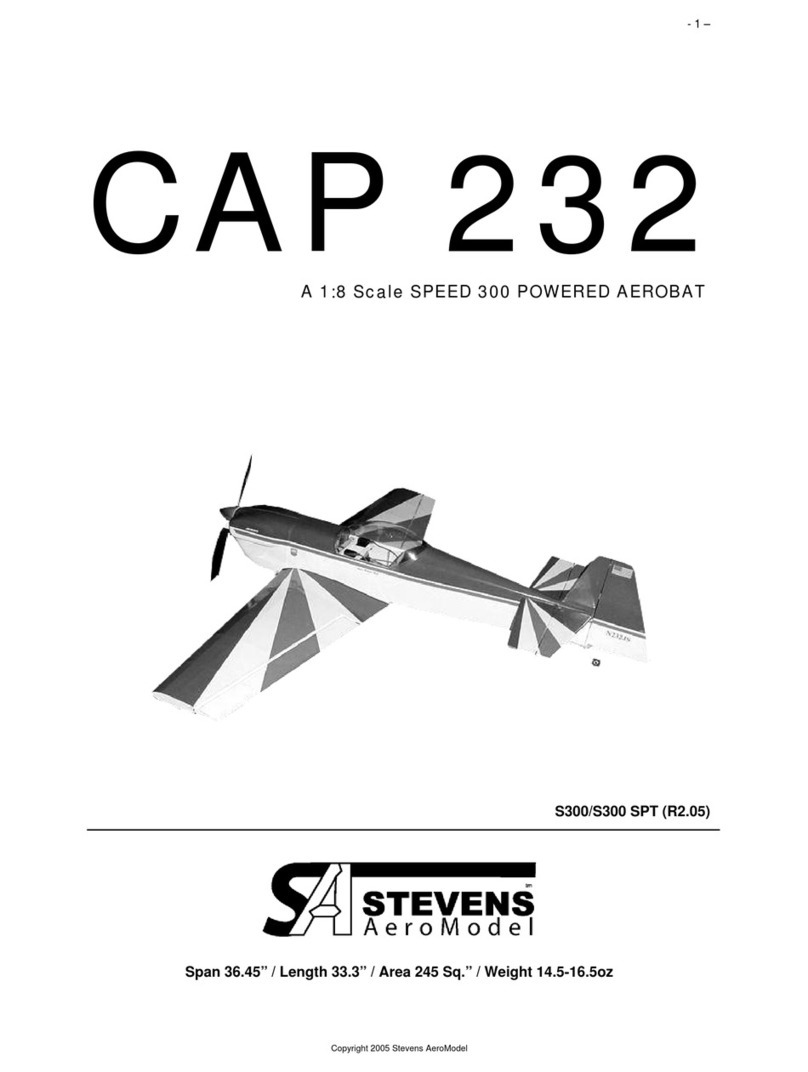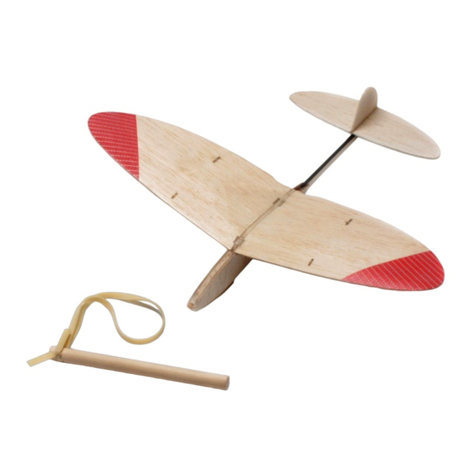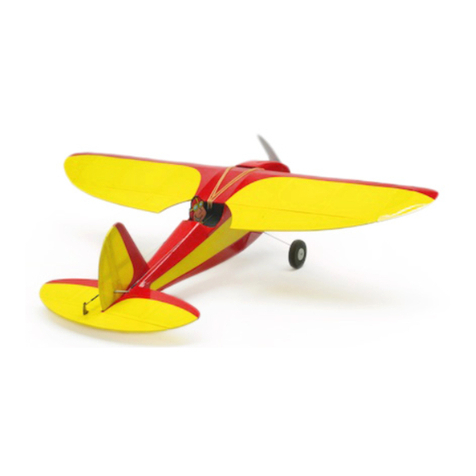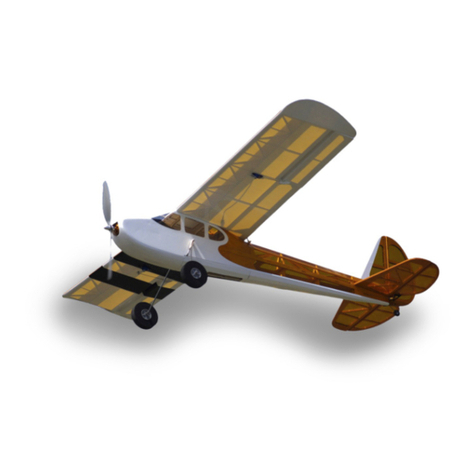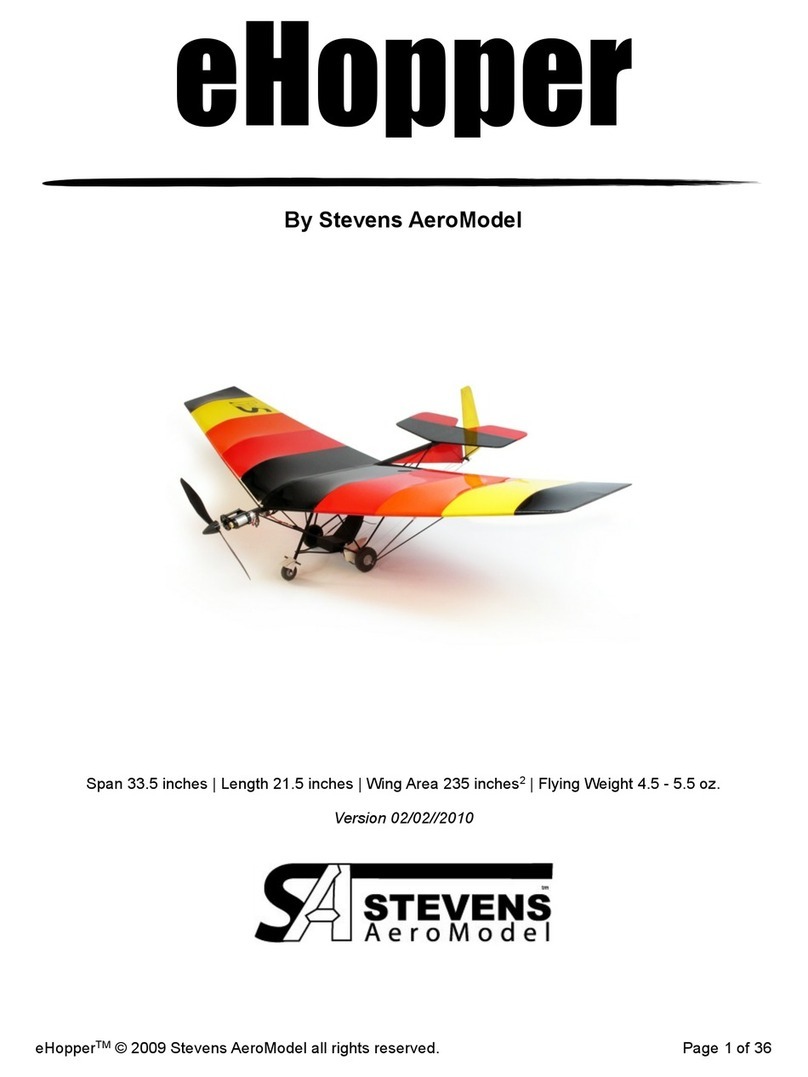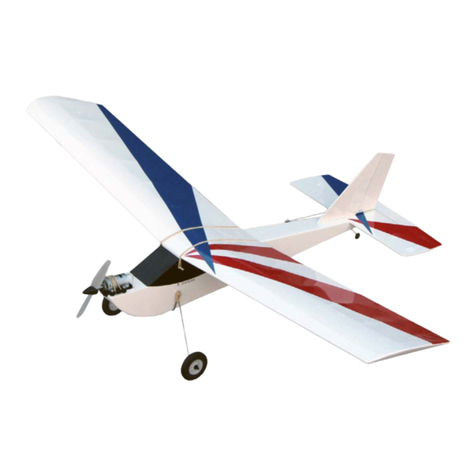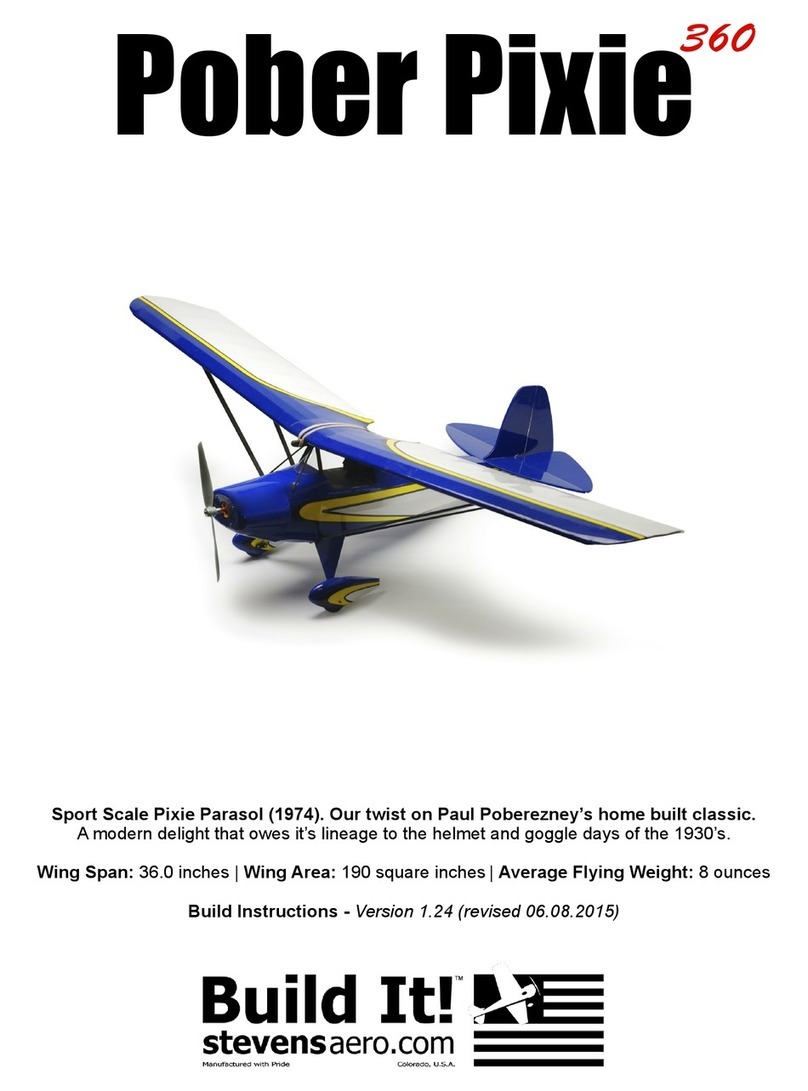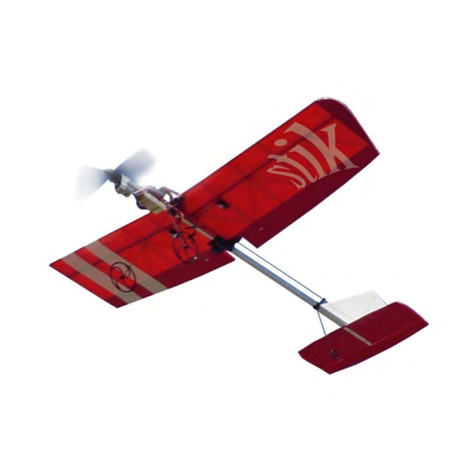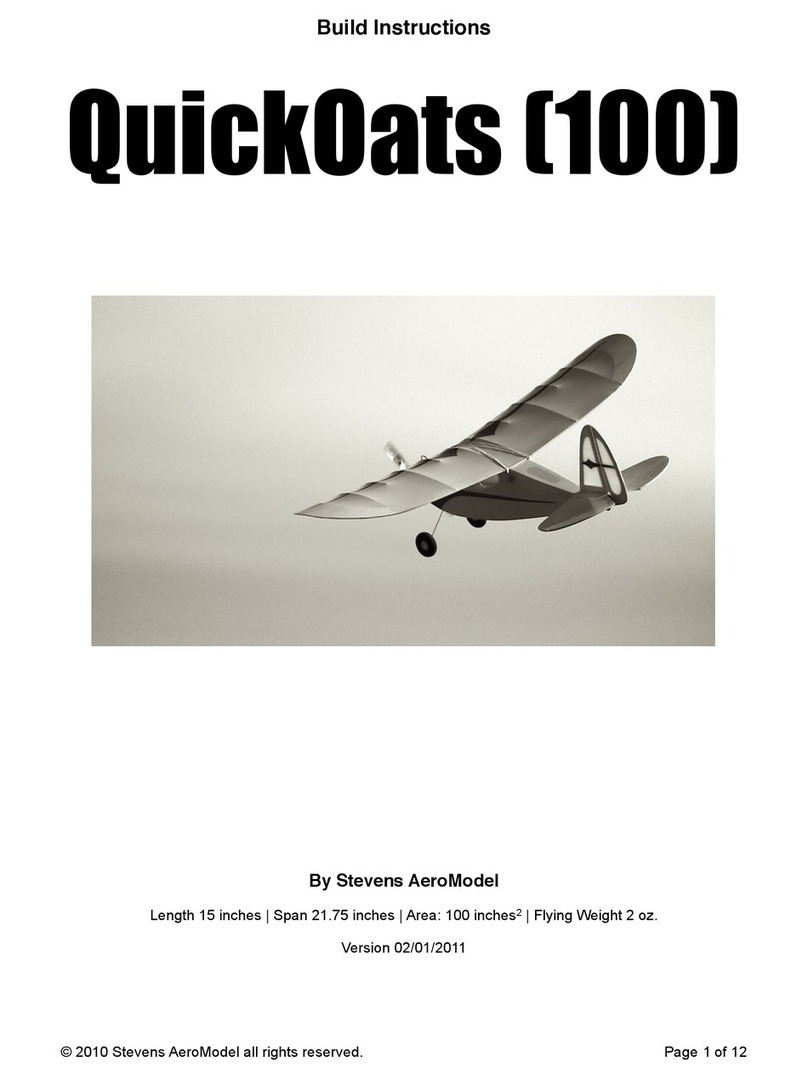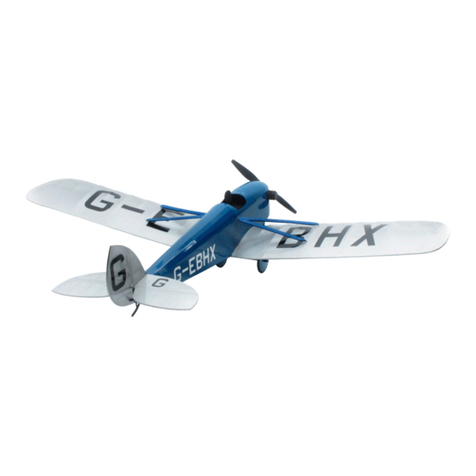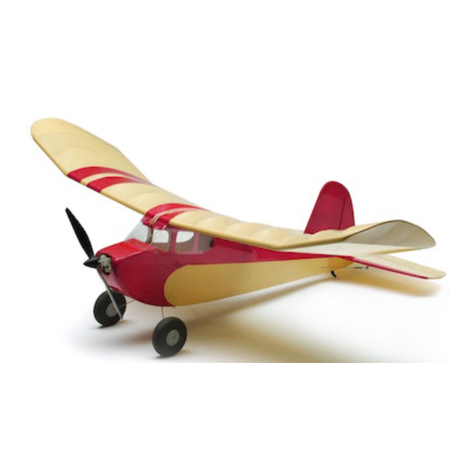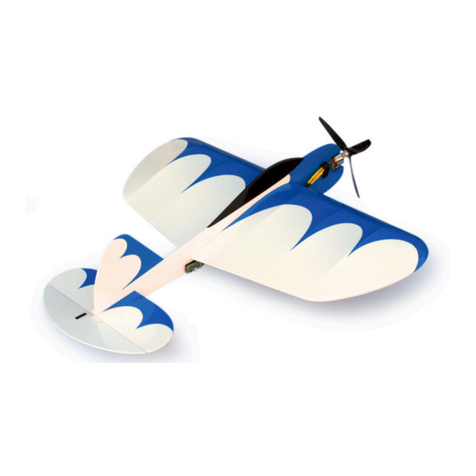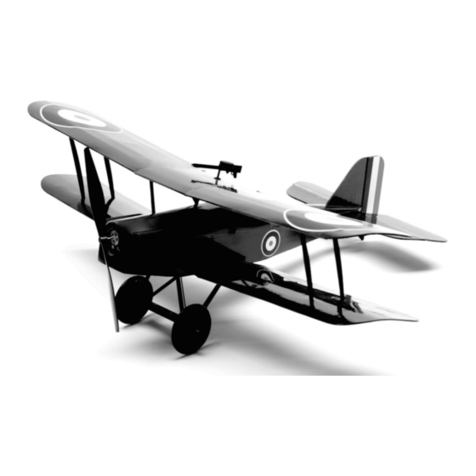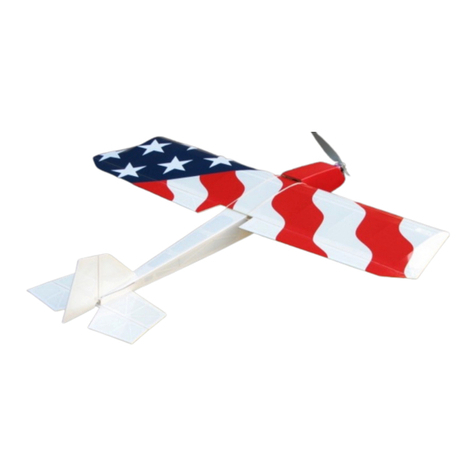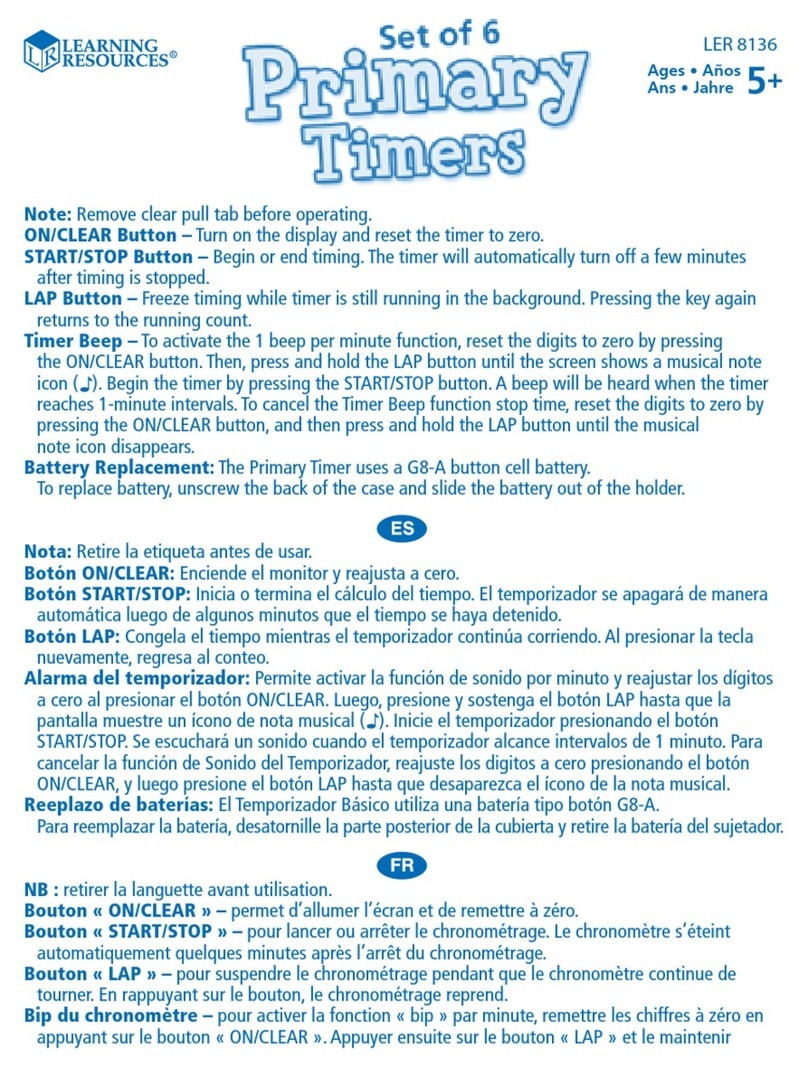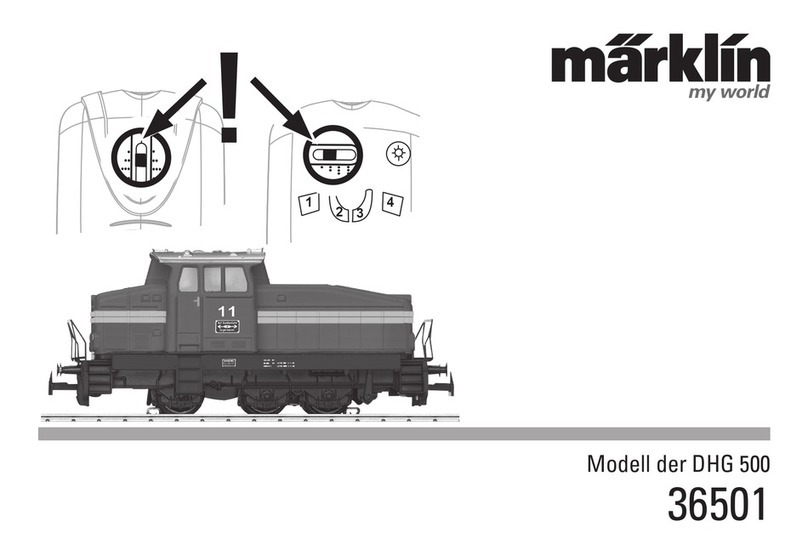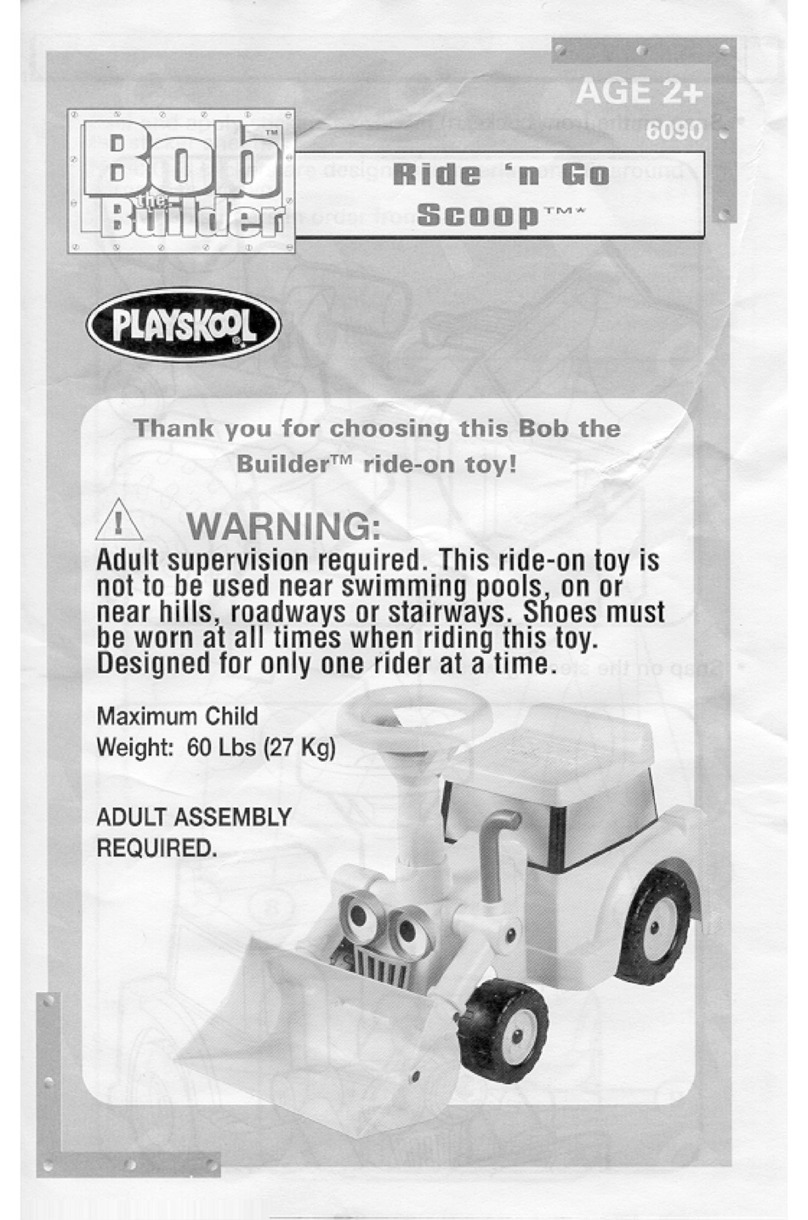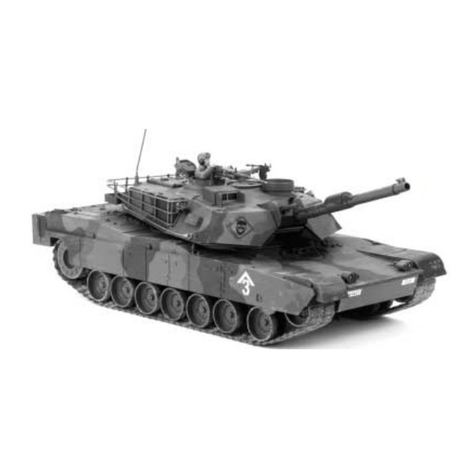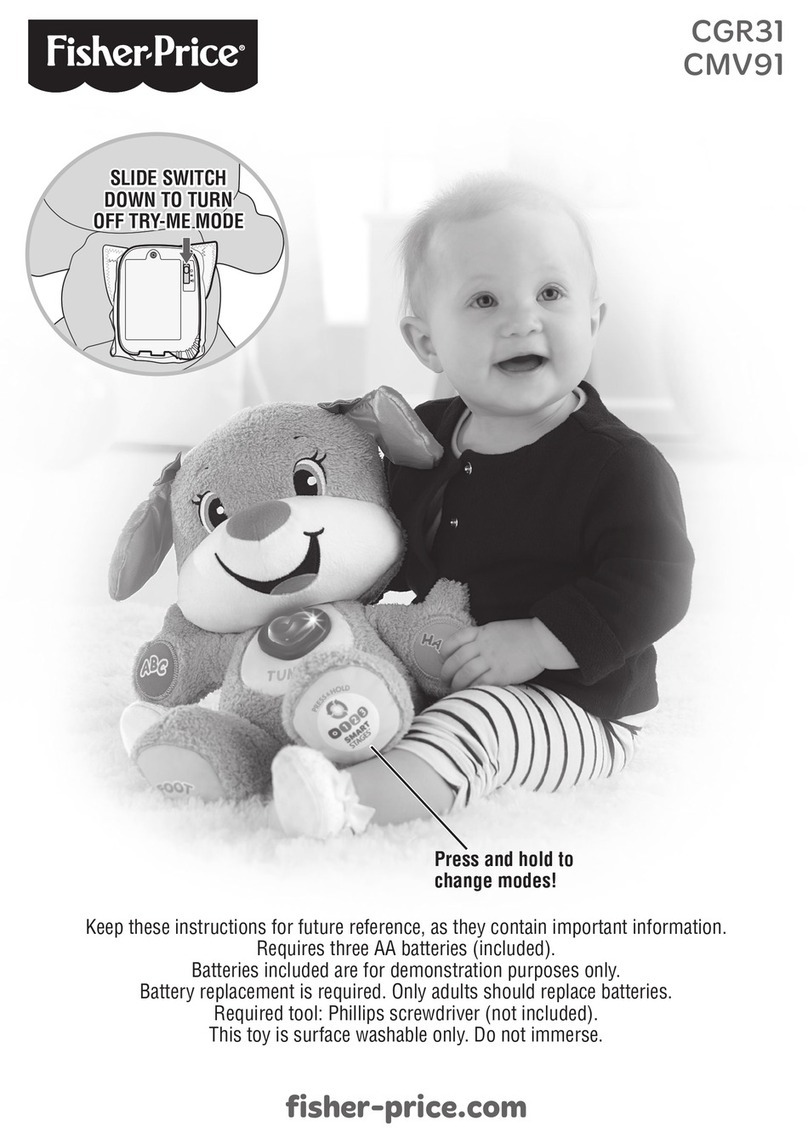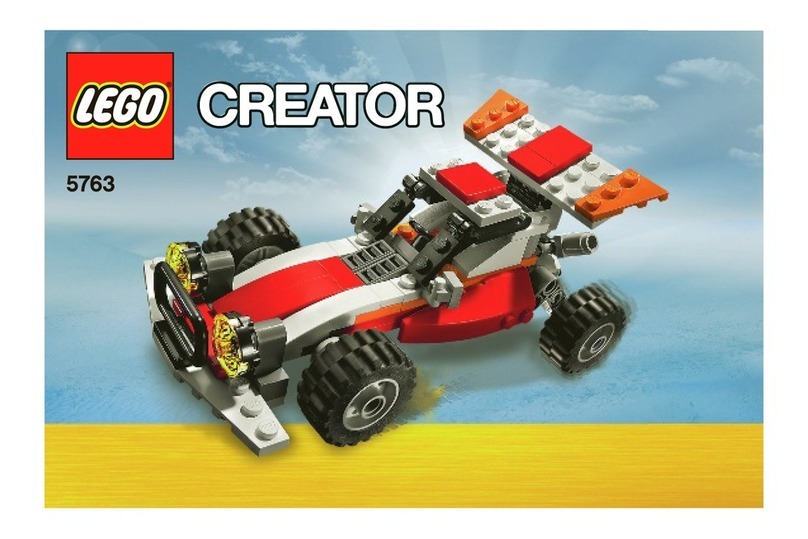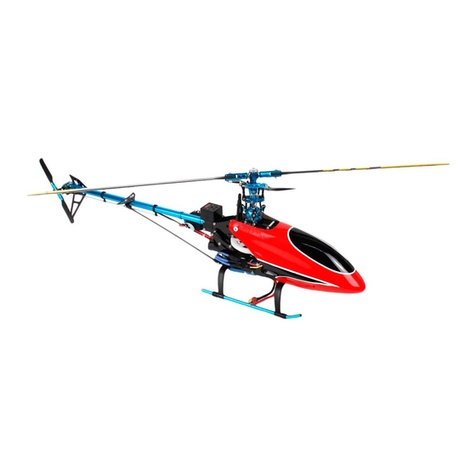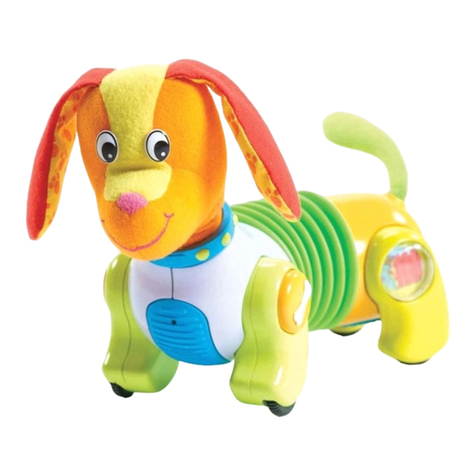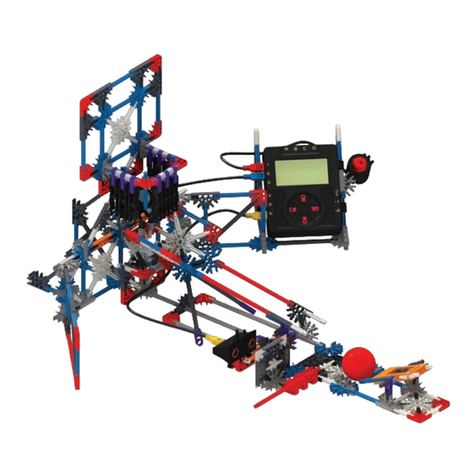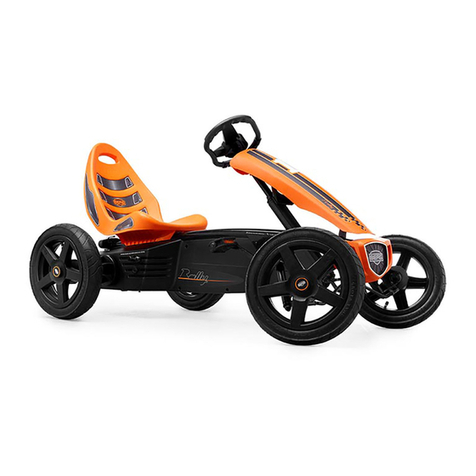
Wing
Wing parts are designated with a “W” followed by a numeric. Parts have been numbered so that the wing
assembly and required parts follows in numeric order from W1 to W8. Note: Parts W6, W7, and W8 will
not be installed until the Final Assembly.
39. Lay both right and left wing panels W1 - etched side up - on the table. Fit and bond one
each spar W2 within the right and left W1.
40. An arrow etched to parts W3, W4, and W5 indicates the leading edge of the wing ribs. Fit
the end opposite the arrow (trailing edge) of ribs W3, W4 and W5 within the corresponding
notched positions along the trailing edge of the right and left wing panels. The position of
each rib is indicated on the plan - Ensure that each rib is in the correct position before
gluing. Tack glue the trailing edges of the ribs to the wing panels with medium CA.
41. Now, turn the wing panel assemblies over on the table. Bend the leading edge of W1 over
the leading edge of the ribs, engaging the tabs on the ribs with the slots and notches
towards the leading edge of W1. Tack glue ribs to W1 where they interface at tab and notch
locations and along the leading edge of the wing. Hold the completed wing panel
assemblies down on a flat surface and adequately bond all tack glued components
together.
Final Assembly
Covering
42. Seal the bare wood with a light mist of DEFT brand clear lacquer spray and lightly sand as
the lacquer may raise the wood grain. Now, cover the Fuselage, wings (for a cleaner
looking model we suggest lightly painting the underside of the wings in a matching color
prior to covering the top surface), tail surfaces, and one side of W8 with a lightweight
covering material. Paint the struts, control horns, cockpit, motor, and receiver tray interiors
as desired to match your covering scheme. We recommend Stevens AeroModel AeroLITE
covering, DEFT clear lacquer, and Design Master paints. Apply any trim scheme and
markings at this time. Tip: Do not cover the fuselage bottom or rib profile on the fuselage
where later part W6 will be bonded.
Linkage Installation
43. Fit the receiver/ESC/servo brick to the receiver tray, with the geared end of the servos
pointing forward. Fit the edge of the circuit board into the slot in the short arm of the nylon
receiver clip, and GENTLY press down on the forward edge of the receiver until it snaps into
the slot on the longer forward arm. Tip: Support F1 from the cockpit side of the model with
a finger while seating the receiver.
44. Follow the Pushrod Detail on the plan, sheet 2 of 2, to make and install the Rudder and
Elevator pushrods from the supplied lengths of .015 wire. The Rudder pushrod will pass
through the opening in F3, the RIGHT hole in F7, and the upper exit slot on the RIGHT side
of the fuselage. The Elevator pushrod will pass through the CENTER hole in F7, and the
lower exit slot in the LEFT fuselage side.
With the pushrods installed it’s now time to cover the bottom of the fuselage to match your
covering/trim scheme.
45. Follow the tape hinge diagrams on the plan pages to attach the Rudder to the Vertical
Stabilizer (Page 1 of 2), and the Elevator to the Horizontal Stabilizer (Page 2 of 2).
46. Install the Rudder horn on the right side of the Rudder, and the Elevator horn on the lower
left side of the Elevator.
Build Instructions
1946 “Say’s Nuh!” C-140 UM Build Instructions. © 2013 Stevens AeroModel all rights reserved.!Page 18
□
□
□
□
□
□
□
□




















